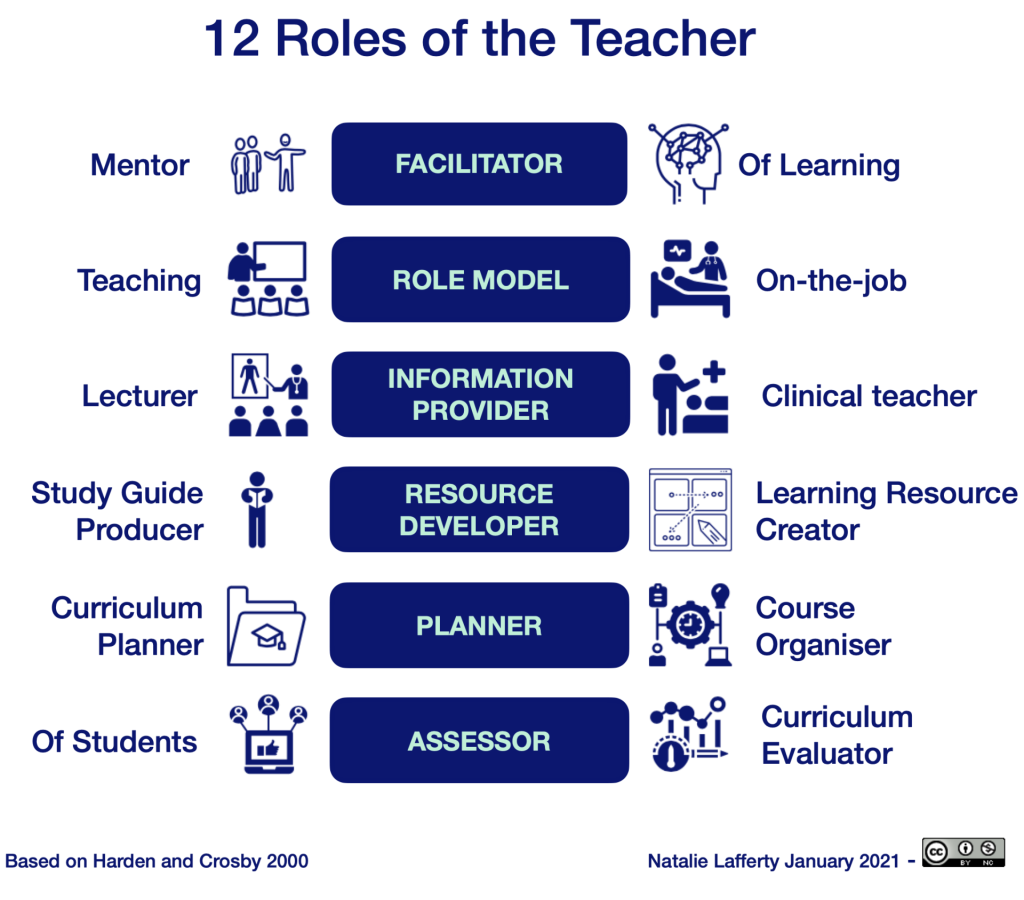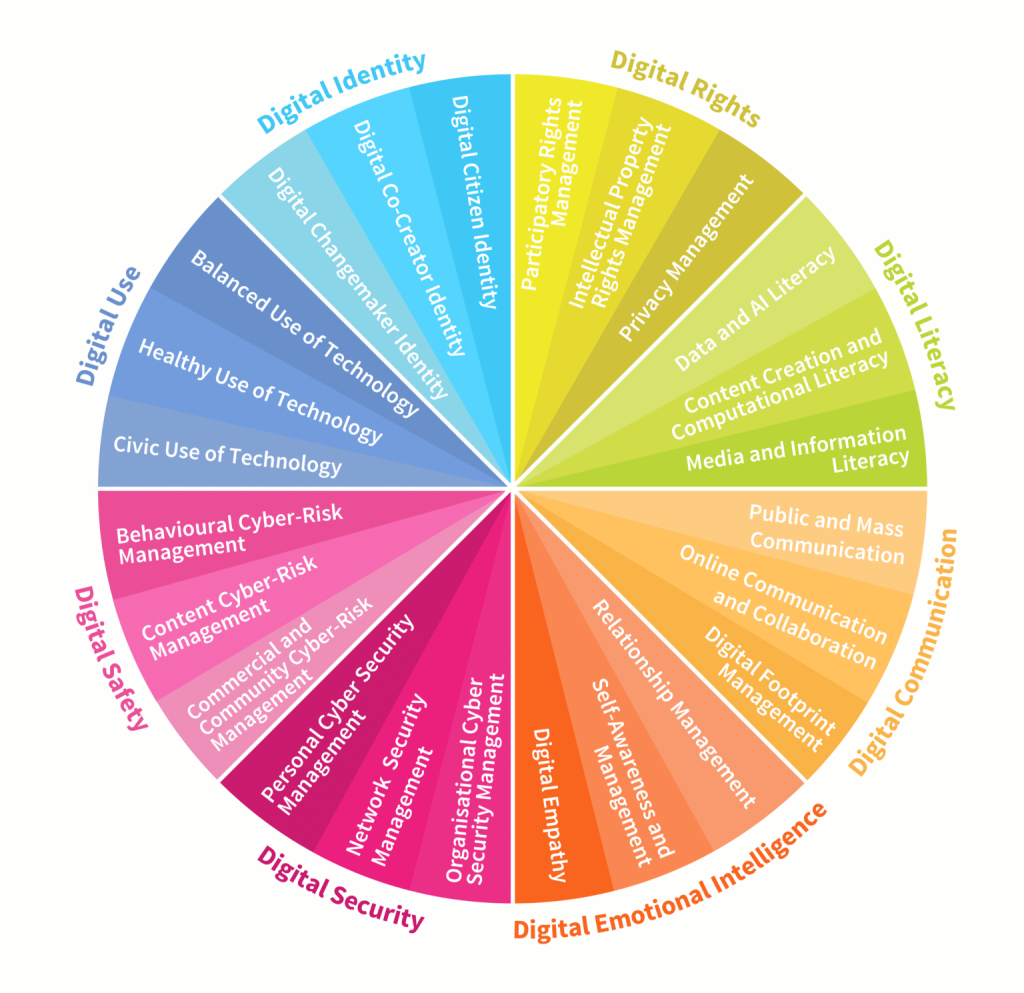
Having given some thought to our digital identity and landscapes we’re now going to take some time to think about the roles of the doctor as teacher.
Back in 2020 Crosby and Harden highlighted that a good teacher involved in medical education does much more than simply lecture and they identified 12 roles of the teacher (1). Building on these roles of the teacher Srinivasan et al. (2) looked to identify the key competences required to be an effective teacher in medical education and went on to outline the six core competencies that medical teachers should have and four specialised competencies.
With most doctors involved in some form of teaching in their careers the General Medical Council has recognised the importance of training and education for doctors to develop their teaching skills. Individuals involved in teaching in undergraduate medicine or of supervision at postgraduate level are being asked to provide evidence of their training in education and undergraduates are expected to begin to develop their teaching skills at medical school. The GMC’s recognition of trainers is based upon the Academy of Educators professional standards for medical, dental and veterinary educators (3) which map to five domains of practice and a set of core values. You’ll see that whilst there are similarities to the 12 roles of the teacher there are some additional areas of practice namely educational leadership and research and scholarship.
Have a browse through some of these papers or explore others you might find and as you look at the roles and competences for teaching note down your thoughts and reflect on the points detailed below
- what do you think makes a good teacher?
- do you think there is increased attention on the learner and self-directed learning in the undergraduate medical curriculum today?
- the importance of the teacher as a role model – in 2024 there is perhaps an increasing focus on role modelling as it relates to professionalism
- the importance for the doctor as an assessor to be able to provide high quality feedback to the students.
- how do you think technology plays a role in these different roles of the teacher and what digital capabilities do you think a teacher needs to have?
It’s interesting to note that the Academy of Educators standards doesn’t mention the words ‘digital’ or ‘technology’. Whilst we’ve looked to debunk the myth that lecturers are digital immigrants who can’t use technology, the reality is that some teachers lack both the digital confidence and fluency to use and apply digital approaches in their teaching practice. A couple of more recent publications have proposed frameworks for digital competences of lecturers, including one from the EU (4).
In the first session I mentioned that no one teaches us to do online shopping or banking or how to book a holiday. We’ve just got on with it and adapted to doing things digitally and so much of what we do now is underpinned by digital. We use the Internet to enact so much of our lives. Universities are digital institutions that also have buildings. We learn in a digital world, teachers teach in a digital world, you’ll practice medicine in a digital world. It could be argued therefore that we don’t need specific digital competencies, literacies etc we just need to be able to practice in a digital world as digital citizens. The reality is that both institutions and individuals are at different stages on their journey to digital maturity and so it can be helpful to adopt one of the many digital literacy frameworks that are being adopted, such as the DQ Institute’s global standard on the critical skills for thriving in a digital age. Do you think the University should consider adopting one of these frameworks to support both the development of both teacher and student digital capabilities?

References
(3) AoME (2014) Professional standards for medical, dental and veterinary educators
(4) European Framework for the Digital Competence of Educators 2017

This work is licensed under a Creative Commons Attribution-NonCommercial-ShareAlike 4.0 International License.